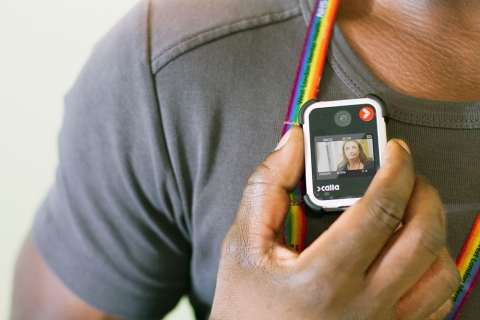

9 September 2019
4 min read
The use of body worn video cameras on mental health wards has shown to have a significant reduction in the seriousness of aggression and violence in reported incidents, a new study has found.
The pilot study, the largest of its kind, found that the use of body worn video cameras (BWVCs) marked a decline in the use of tranquillising injections during restraint incidents.
A camera company supplied 50 BWVCs to be worn by West London Trust (WLT) nursing staff in seven mental health wards, ranging from voluntary admissions to enhanced medium secure wards.
There was an overall reduction in the most serious incidents (restraint requiring injection), from 14 to four, and a reduction in the least serious incidents (verbal aggression) from 94 to 75.
The changes after body worn cameras were introduced in this pilot study are encouraging. The number of the most serious incidents was significantly reduced.
Tom Ellis, School of Criminology and Criminal Justice
Lead author Tom Ellis from the School of Criminology and Criminal Justice at the University of Portsmouth said the results were ‘encouraging’.
“The changes after body worn cameras were introduced across all seven of the West London Trust mental health wards in this pilot study are encouraging.
“The number of the most serious incidents, for example those requiring constraint by the use of tranquilising injections, was significantly reduced.”
The study, published in the Mental Health in Family Medicine journal, found that the use of BWVCs was beneficial to patients, mental health staff and managers.
Trusts around the country are introducing specialist body worn cameras to reduce violence, bullying and harassment against NHS staff.
The data showed that the cameras helped reduce serious incidents and modified behaviour in a positive way, for both staff and patients.
Stephanie Bridger, Director of Nursing and Patient Experience at West London Trust
Stephanie Bridger, Director of Nursing and Patient Experience at West London Trust said: “The pilot study provided us with really useful data which supported the use of body worn cameras on our inpatient wards.
“The data showed that the cameras helped reduce serious incidents and modified behaviour in a positive way, for both staff and patients.”
In 2015, researchers from the Institute of Criminal Justice Studies led by Tom Ellis conducted the first independent evaluation on the impact of personal-issue video cameras attached to the chest of police officers.
The research found public order and assault crimes went down by nearly 20 per cent in a police area where all frontline officers wore body worn video cameras.
